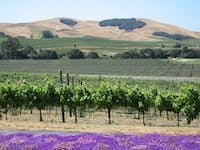The U.S. Environmental Protection Agency (EPA) and Napa County, Calif., have announced the details of nearly $3.3 million in federal, state and local funding aimed at restoring water quality and riparian and aquatic habitats in the Napa River watershed. As part of two major restoration efforts covering 15 miles of the Napa River, more than 40 landowners have committed to converting nearly 135 acres of farmland to wildlife habitat.
Regional steelhead and Chinook salmon populations have suffered steep declines as a result of high concentrations of fine sediment in the Napa River, which clouds spawning gravel. In-stream erosion has degraded the once complex channel, severely reducing rearing habitat for these species. The river, which runs 55 miles from Mt. St. Helena to the San Pablo Bay, is also prone to seasonal flooding from November to April.
“Despite long-term habitat degradation and falling fish populations, the Napa River represents one of the most important watersheds within the San Francisco Bay-Delta estuary for the recovery of regional steelhead populations,” said EPA Regional Administrator for the Pacific Southwest Jared Blumenfeld. “This $1.5 million EPA grant will help manage erosion, improve spawning gravel and create habitat for critically endangered salmon.”
The Napa River has cut down so much that it’s up to three times deeper than it once was, creating vertical stream banks up to 30 ft high. In some locations the banks have become unstable and subject to catastrophic collapse. The river channel is also much narrower than before, making flows more erosive. To stabilize river banks and create wildlife habitat, vineyard owners in the Rutherford area have committed to converting 20 acres of agriculture land back to river habitat. Landowners are continuing the restoration of the Napa River south of Rutherford between Oakville and Oak Knoll in the Napa Valley and in total have committed to restoring more than 115 acres.
The Napa River historically supported a run of 6,000 to 8,000 steelhead, but by the late 1960s those numbers had declined to an estimated 2,000 adults. Today the steelhead run is estimated to be less than a few hundred adults.
Source: EPA


